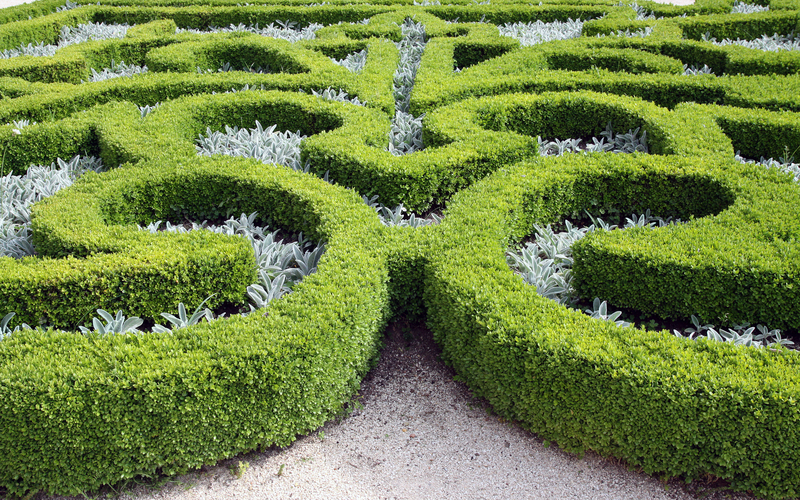Choosing 9 Ground Cover Plants for Lovely UK Gardens
Posted on 10/06/2025
Gardening in the UK: The Beauty of Ground Cover Plants
Creating a visually appealing garden involves the use of various plants, each serving distinct purposes. One of the charming ways to enhance your garden's aesthetic is by incorporating ground cover plants. These plants not only add texture and colour but also help suppress weeds, conserve moisture, and prevent soil erosion. Choosing the right ground cover plants for UK gardens can transform your outdoor space into a verdant paradise. Below, we explore nine stunning options ideal for lovely gardens across the UK.

Benefits of Using Ground Cover Plants
Before diving into our recommended plant list, it's essential to understand the benefits of ground cover plants. Using these versatile garden elements can offer the following advantages:
- Weed Suppression: A thick carpet of leaves can crowd out weeds, reducing garden maintenance.
- Moisture Retention: Ground covers act as a natural mulch, retaining soil moisture and reducing evaporation.
- Soil Erosion Prevention: Their roots stabilize the soil and prevent erosion, especially on slopes.
- Visual Appeal: Ground covers can add visual interest with their varied textures, colours, and blooms.
- Wildlife Habitat: These plants can offer habitat to beneficial insects and other small wildlife.
9 Best Ground Cover Plants for UK Gardens
1. Vinca minor (Lesser Periwinkle)
Vinca minor is known for its beautiful purple-blue flowers and evergreen foliage, making it an excellent choice for all-year-round appeal. This hardy plant thrives in partial to full shade, making it perfect for those tricky garden spots where the sun seldom reaches. Its fast-spreading nature allows it to cover large areas swiftly, providing a lush green tapestry.
2. Ajuga reptans (Bugleweed)
Featuring a striking mix of blue flowers and dark green foliage, Ajuga reptans is ideal for adding colour and drama to the garden floor. It performs well in shady locations, making it versatile for various garden settings. Notably, its foliage can display hues ranging from bronze to chocolate, offering a unique visual element.
3. Hedera helix (English Ivy)
English Ivy is a classic choice for UK gardens due to its evergreen nature and adaptability. This climbing or spreading mean green machine works well as a dense ground cover or as a living green wall. Its ability to thrive in poor soil conditions makes it particularly useful for difficult spots in the garden.
4. Cerastium tomentosum (Snow-in-Summer)
As its name implies, Cerastium tomentosum dazzles with bright white blooms in the summer against a backdrop of silvery leaves. This plant prefers well-drained soil and full sun, making it an excellent choice for sunny borders or rock gardens.
5. Waldsteinia ternata (Barren Strawberry)
Resistant to pests and disease, Waldsteinia ternata offers glossy, lush foliage and cheerful yellow flowers in spring. This plant performs exceptionally well in shaded areas, providing a striking contrast to darker garden corners. Its robust nature requires little maintenance, making it ideal for novice gardeners.
6. Geranium macrorrhizum (Cranesbill)
Known for its fragrant foliage and delicate pink or white blooms, Geranium macrorrhizum thrives in various conditions, from full sun to partial shade. This adaptable plant provides an effective cover for most garden soils and requires minimal upkeep once established.
7. Thymus serpyllum (Creeping Thyme)
If you're seeking a fragrant and edible ground cover, creeping thyme fits the bill. Perfect for sunny positions, it offers a delightful scent when stepped on and boasts an array of pink to purple flowers. It's an excellent choice for between stepping stones or as an aromatic feature in herb gardens.
8. Lysimachia nummularia (Creeping Jenny)
Creeping Jenny, with its vibrant yellow-green foliage, brightens any shady spot. It adapts to sun or shade and offers noteworthy seasonal interest with yellow blooms in summer. This plant is especially effective in moist areas, including next to garden ponds or streams.
9. Alchemilla mollis (Lady's Mantle)
Celebrated for its fan-shaped leaves and foamy sprays of yellow flowers, Alchemilla mollis works well in both sun and partial shade. Commonly used in borders, its leaves catch droplets of water, adding a beautiful dew-kissed effect.
Tips for Successfully Planting Ground Covers
For the best results with your ground cover plants, consider these essential tips:
- Prepare the Soil: Ensure good drainage and nutrient-rich soil by incorporating organic matter before planting.
- Spacing: Plant ground covers closer together to achieve their intended effect quickly while also controlling weeds.
- Watering: Establishing plants need consistent moisture, so be sure to water during extended dry periods.
- Weed Control: Keep the area weed-free during establishment to prevent competition for resources.
- Mulching: Use organic mulch to retain moisture and suppress weeds further.

Caring for Your Ground Cover Plants
While most ground covers are low-maintenance, some care ensures they remain vibrant and healthy:
- Prune regularly to control their spread and encourage bushier growth.
- Fertilise in early spring to stimulate strong growth and blooming for flower-producing varieties.
- Monitor for pests and diseases--while many ground covers are resilient, early intervention can prevent significant issues.
Conclusion
Incorporating ground cover plants in UK gardens offers both aesthetic and practical benefits, from reducing maintenance to providing lush, year-round beauty. By selecting a variety of plants suited to your particular conditions, you can create a stunning garden floor that enhances the overall landscape. With these nine options, you're well on your way to cultivating an enchanting and environmentally beneficial garden space.

